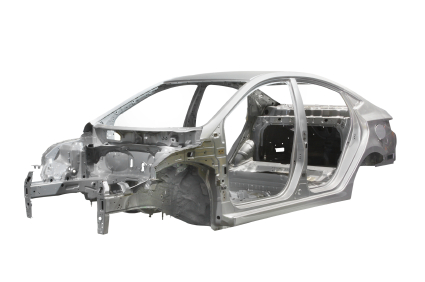In this rendering from Tesla, you can see the CT has a bunch of folded sheet metal inside the door frames, floor pan, roof edges,and pillars that looks a lot like the cabin design of many other "unibody" designs. It has ribs added under the bottom of the cabin for stiffness. The unique part is that the outer front fenders, frunk inner panels, rear fenders, and inner bed sides appear to be used as part of the structure to connect it to the front and rear suspension.

I can't see 80% of what you are discussing here, from this side view rendering; floor pan, ribs, frunk inner panels, inner bed sides, front or rear suspension, or inside the door frames. How do you get all that from this view?



